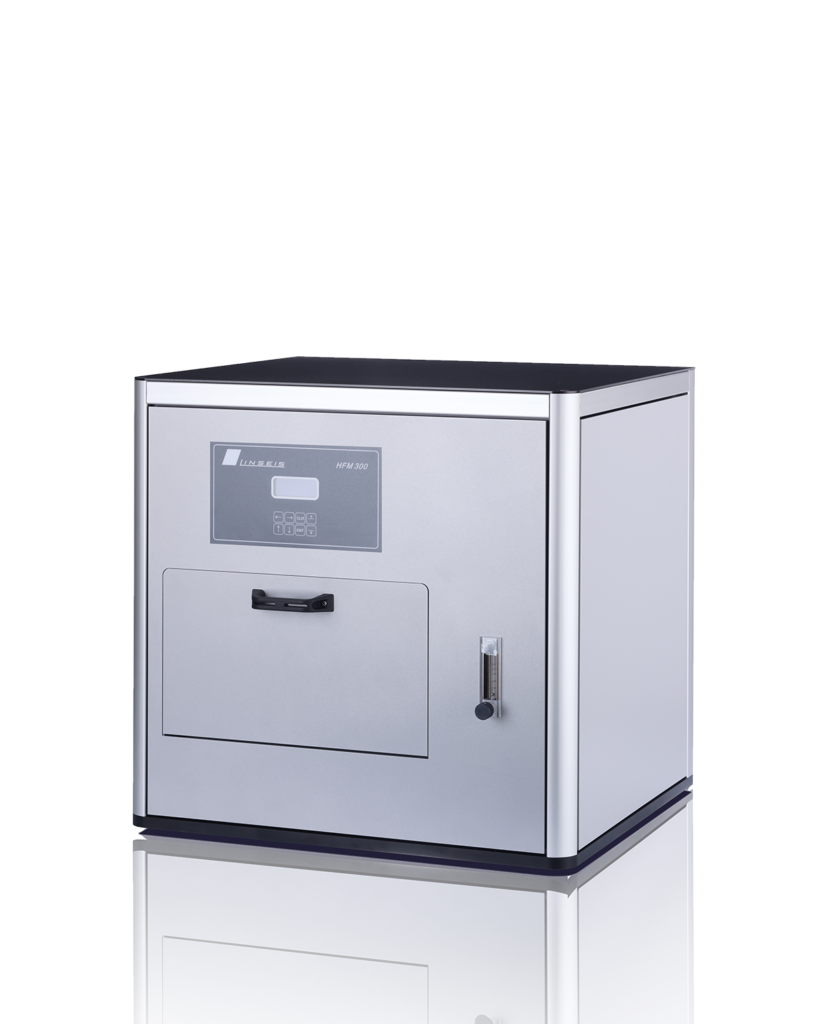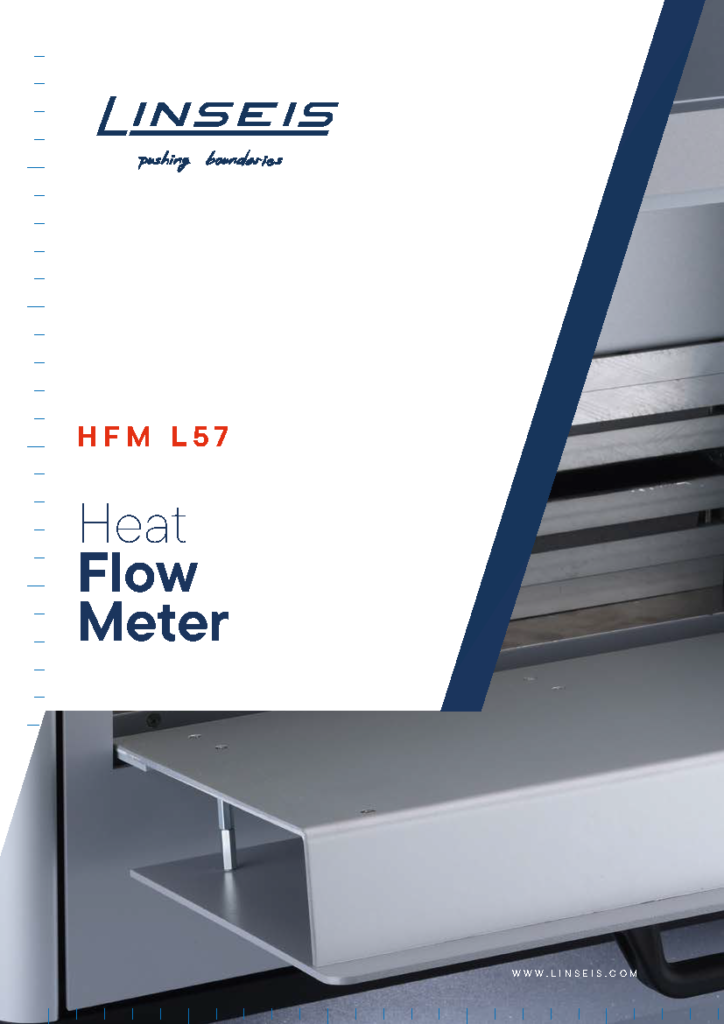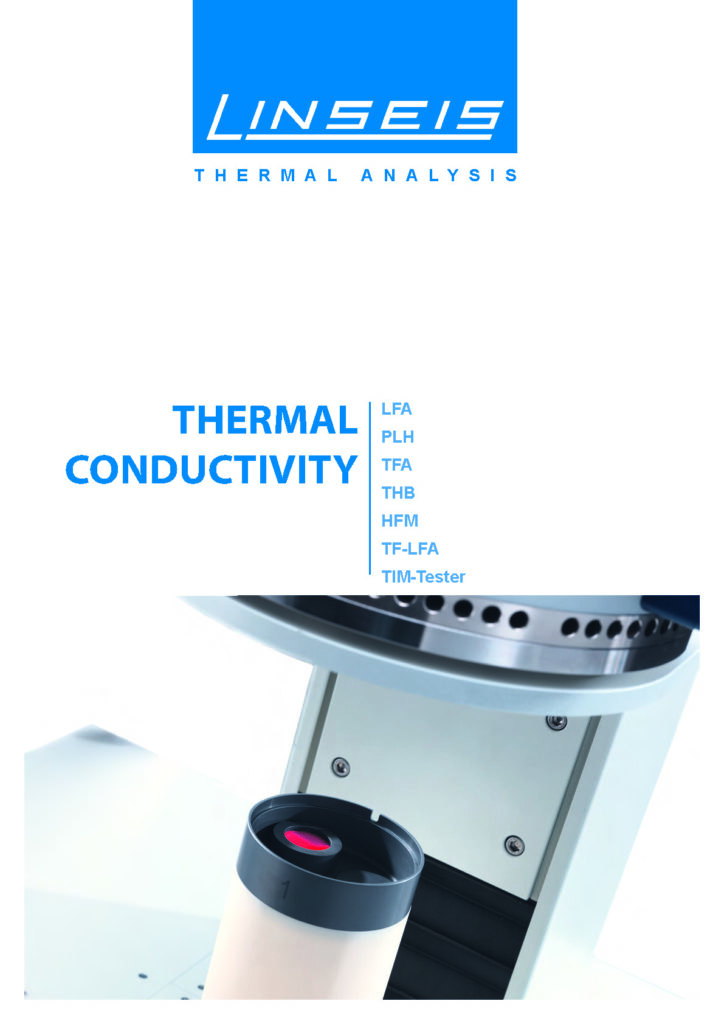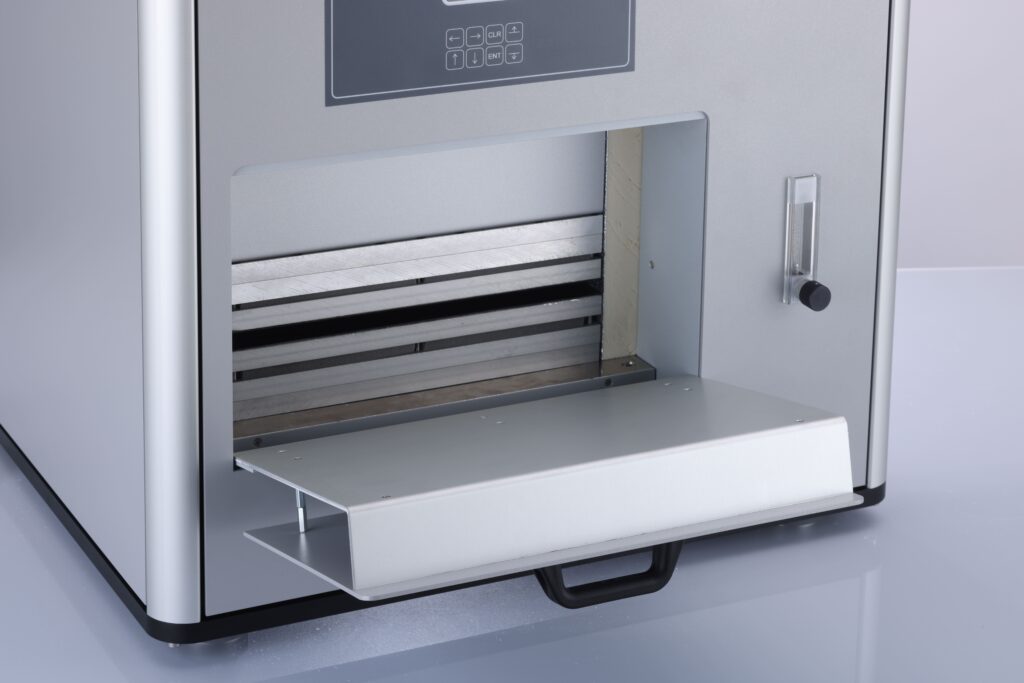Description
To the point
The LINSEIS Heat Flow Meter L57, HFM for short, is an easy-to-use instrument for determining the thermal conductivity of insulating materials with low thermal conductivity and other materials.
It provides fast results with high accuracy.
Thanks to its unique design, measurements can be taken in just a few minutes.
Peltier heating and cooling technology enables high-precision temperature control while reducing maintenance and downtime.
The excellent long-term stability enables accurate long-term aging studies.
Fast measurement cycles of only 15 minutes can be achieved, resulting in a high sampling rate.
To enable these fast and accurate sampling intervals, the device uses a dual sensor arrangement.
Built-in potentiometers for length measurements (μm resolution) provide instant sample thickness data.
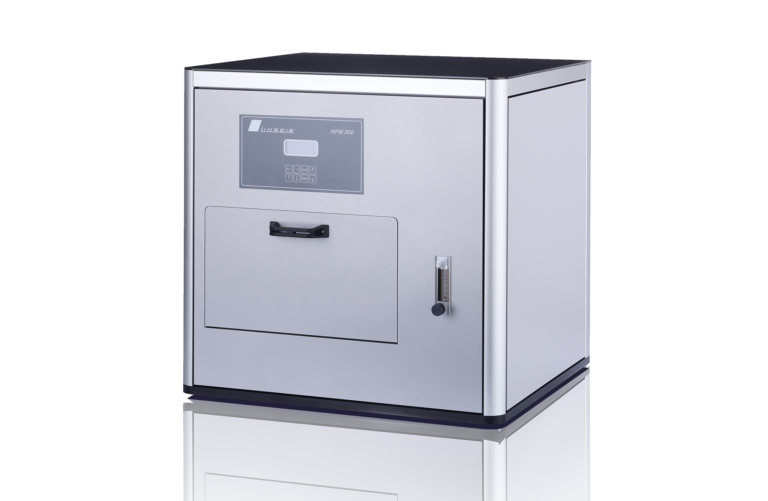

HFM features of the “updated version”:
- Clean system design with improved insulation and optimized electronics
- Unrivaled precision and accuracy
- Low power consumption
- Design of the instrument based on the standards ASTM C518, JIS A1412, ISO 8301, DIN EN 12664 and DIN 12667
Most important advantages
Short test cycles
The dual heat flow sensor configuration ensures the shortest possible measurement cycles.
A typical measurement for most samples can take as little as 15 minutes for the temperature to stabilize.
Highest accuracy
The device has two built-in linear potentiometers that enable automatic determination of the sample thickness with the highest precision.
Two heat flow sensors then measure the heat flow, which is precisely defined between the hot and cold plates.
No maintenance
The robust system design and the unique maintenance-free Peltier heating and cooling cycle ensure minimal maintenance costs.
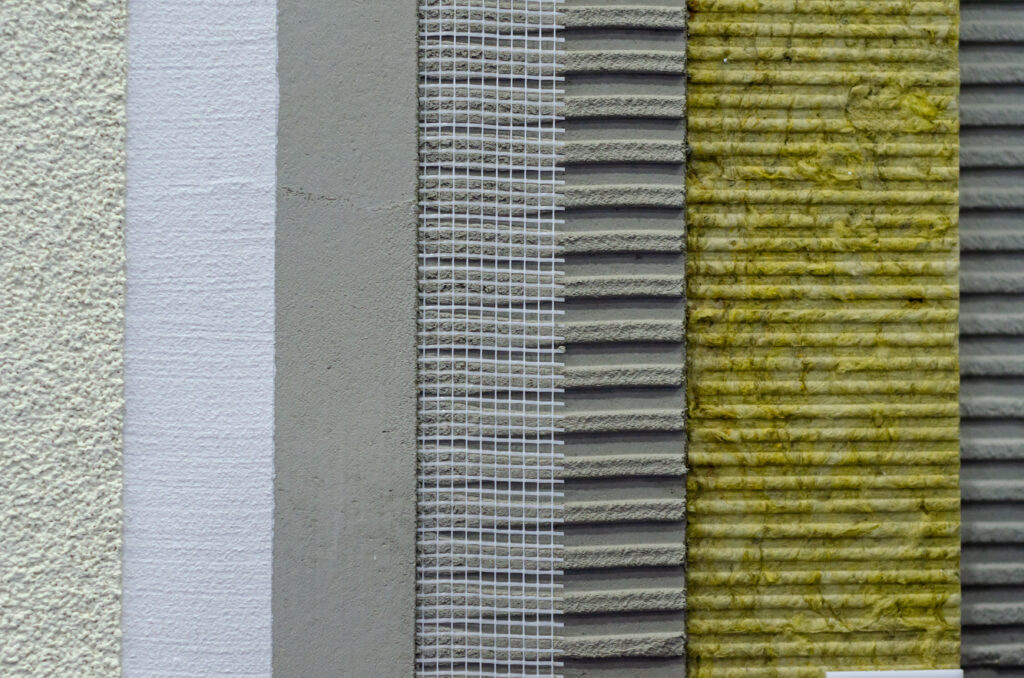
Operating the device

Integrated condensation protection system
To prevent the moisture content from affecting the thermal conductivity
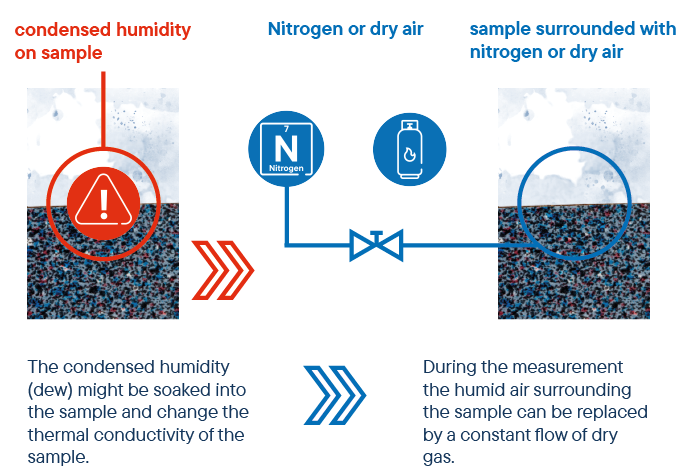
If the temperature of an object falls below the ambient temperature and reaches the dew point of the ambient air, the moisture contained in the air begins to condense on the object.
This also applies to samples that are placed in the HFM and are to be measured at a temperature below the dew point.
The condensed moisture (dew) could penetrate the sample and change the thermal conductivity of the sample.
To avoid this problem, the ambient air can be replaced with dry air or nitrogen and a constant gas flow can be used to prevent condensation during the entire measurement period.
The necessary components such as throttle valve and flow meter are already integrated in the Linseis HFM.
This enables precise, stable and reproducible measurements.
Unique features
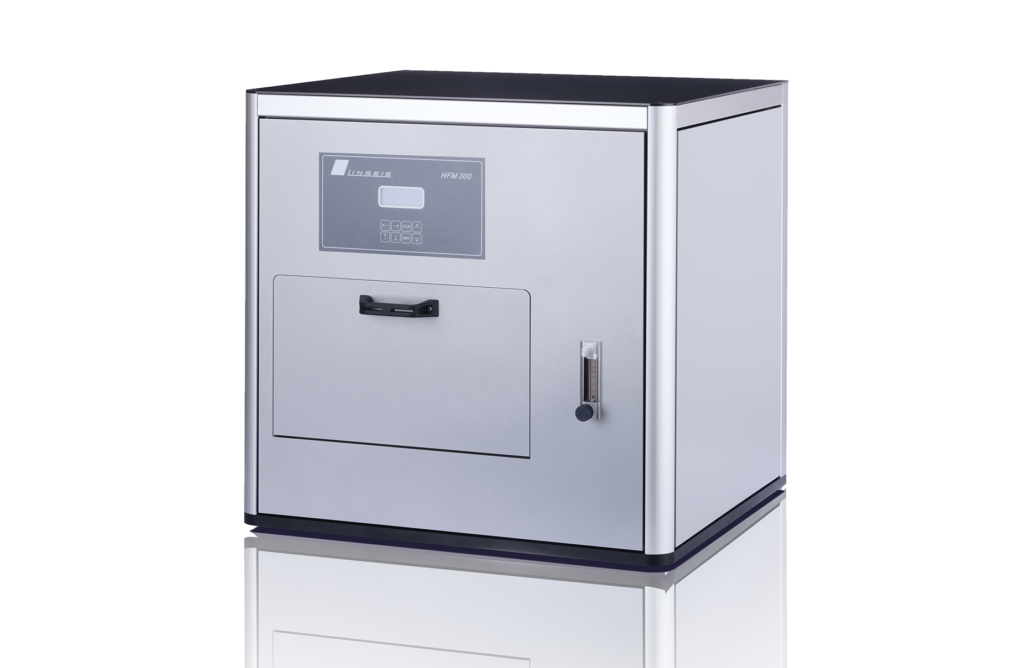
Fast test cycles:
Typical measurement
takes only 15 minutes.
High accuracy:
Two built-in linear Potentiometer for precise
sample thickness measurement.
Maintenance-free:
Robust and minimal maintenance
required thanks to Peltier heating
and cooling technology.
Excellent long-term stability:
Ideal for long-term aging studies.
Integrated condensation protection system:
Prevents Moisture condensation during the measurement.
Questions? We're just a call away!
+1 (609) 223 2070
+49 (0) 9287/880 0
Our service is available Monday to
Thursday from 8 am to 4 pm
and Friday from 8 am to 12 pm.
We are here for you!
Specifications
Hard Facts
MODEL | HFM L57 200 | HFM L57 300 | HFM L57 600 |
|---|---|---|---|
| Temperature range (plates): | 0°C to 90°C -20°C up to 90°C -35°C up to 90°C | 0°C to 90°C -20°C up to 90°C -35°C up to 90°C | -20 to 70°C - - |
| Cooler: | External cooler or thermostat | External cooler or thermostat | External cooler or thermostat |
| Temperature control (plate): | Peltier | Peltier | Peltier |
| Temperature resolution: | 0.0001 °C | 0.0001 °C | 0.0001 °C |
| Measurement data points: | up to 100 | up to 100 | up to 100 |
| Sample size: | 200 mm x 200 mm, up to 90 mm thickness | 300 mm x 300 mm, up to 100 mm thickness | 600 mm x 600 mm, up to 200 mm thickness |
| Thermal resistance measuring range: | 0.2 to 8.0 m2∙K/W with extension set: 0.036 to 9.0 m2∙K/W | 0.2 to 8.0 m2∙K/W, with extension kit: 0.036 to 8.0 m2∙K/W | 0.2 to 8.0 m2∙K/W, with extension kit: 0.036 to 8.0 m2∙K/W |
| Measuring range thermal conductivity: | 0.001 to 0.5 W/m∙K, with extension set: 0.001 to 2.5 W/m∙K | 0.001 to 0.5 W/m∙K, with extension kit: 0.001 to 2.5 W/m∙K | 0.001 to 0.5 W/m∙K |
| Reproducibility: | 0.25% / 0,5 % | 0.25% / 0,5 % | 0.25% / 0,5 % |
| Accuracy: | +/- 1 up to 2 % | +/- 1 up to 2 % | +/- 1 up to 2 % |
| Variable contact pressure: | up to 1.3 kPa, optionally up to 25 kPa | up to 1.3 kPa, optionally up to 25 kPa | up to 1.3 kPa, optionally up to 25 kPa |
| Thermal conductivity: | 0.001 up to 0.5 W/m∙K, with extension set: 0.001 up to 2.2 W/m∙K | 0.001 up to 0.5 W/m∙K, with extension set: 0.001 up to 2.5 W/m∙K | 0.001 up to 0.5 W/m∙K, with extension set: 0.001 up to 2.5 W/m∙K |
Software
Making values visible and comparable
The Linseis Heat Flow Meter can be operated via the touchscreen front panel.
Free software is available as an option.
This powerful software package enables convenient temperature programming, data storage and device control.

Main functions
- The device can be operated via the touchscreen control panel
- Simple input of measurement parameters
- Storage and export of measurement data
- Report printing, layout can be customized
- Multilingual software versions
- Device monitoring (panel temperature, thermal conductivity results and output signal monitoring)
- Optional user login and data monitoring
Applications
Application example: Elastomer foam
This measurement clearly shows the excellent reproducibility of the LINSEIS HFM L57 series.
A reproducibility of 0.25% was achieved.
The graph shows four measurements of an elastomer foam in the temperature range from 15 to 40°C.
The sample was removed and placed in the device again after each measurement.
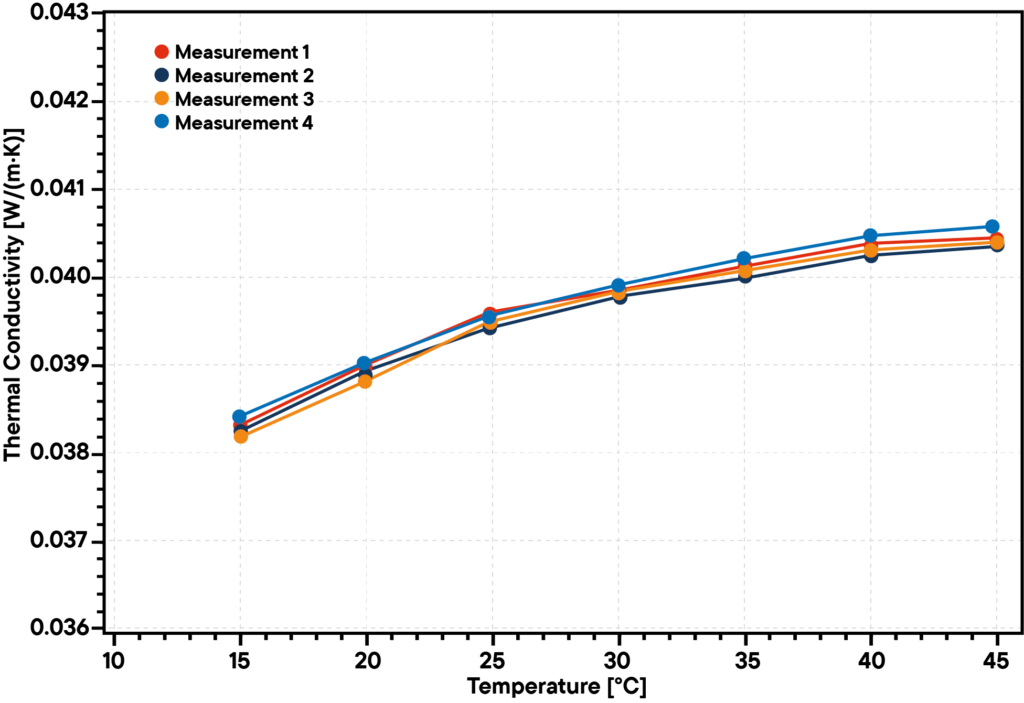
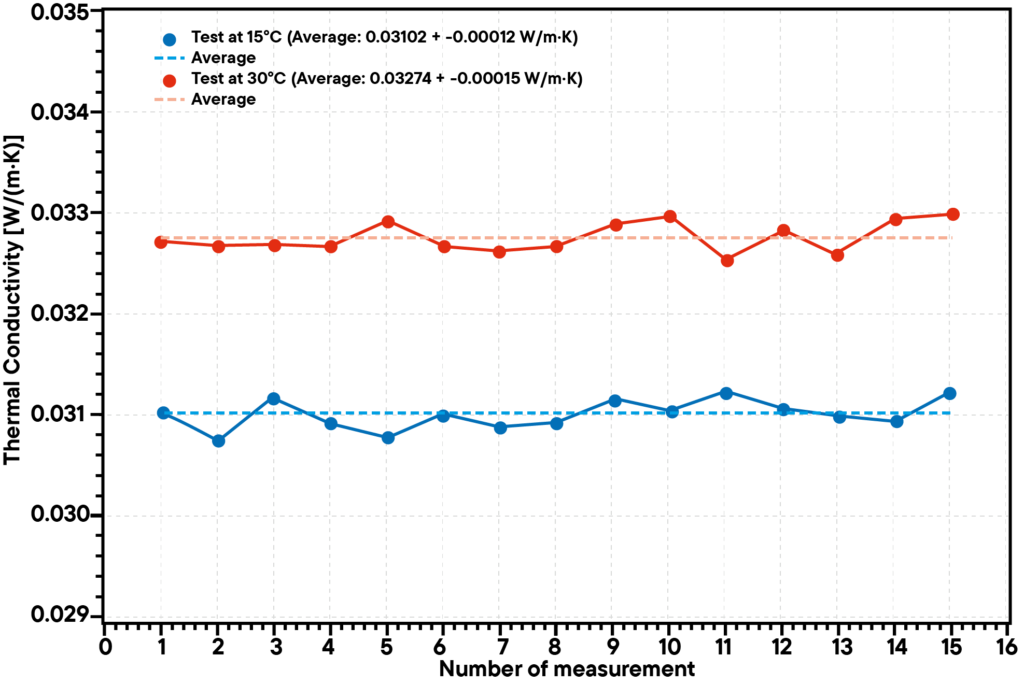
Application example: Reproducibility
15 Measurement of the certified reference material IRMM-440 (resin-bonded glass fiber board) with a thermal conductivity of 0.03274 +/- 0.00015 at 30°C and 0.03102 +/- 0.00012 at 15°C were performed.
The X-axis shows the temperature gradient, the Y-axis displays the measured thermal conductivity. One can see a very high reproducibility between the 15 measurements that is within a very narrow range of only 0.0002 W/m∙K.
Application example: Accuracy
The diagram shows two measurements of the same glass wool sample at different temperatures.
The sample was measured in an HFM L57 300, starting at -10 °C and ending at 50 °C.
The black line shows the thermal conductivity according to the manufacturer’s specifications.
The deviation is less than 1 %.
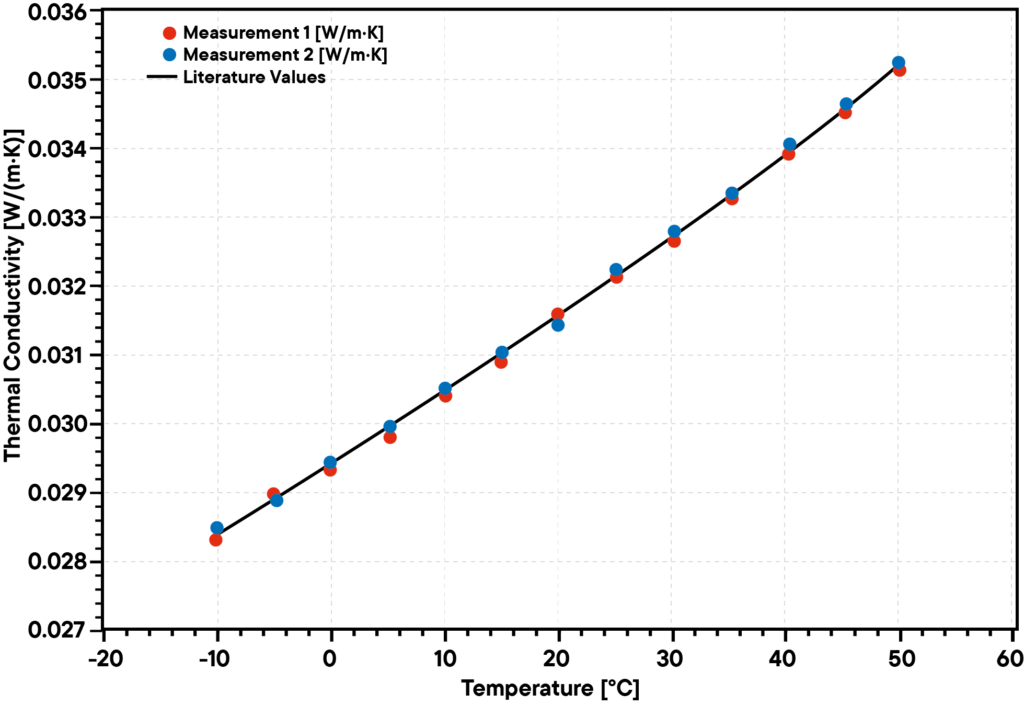
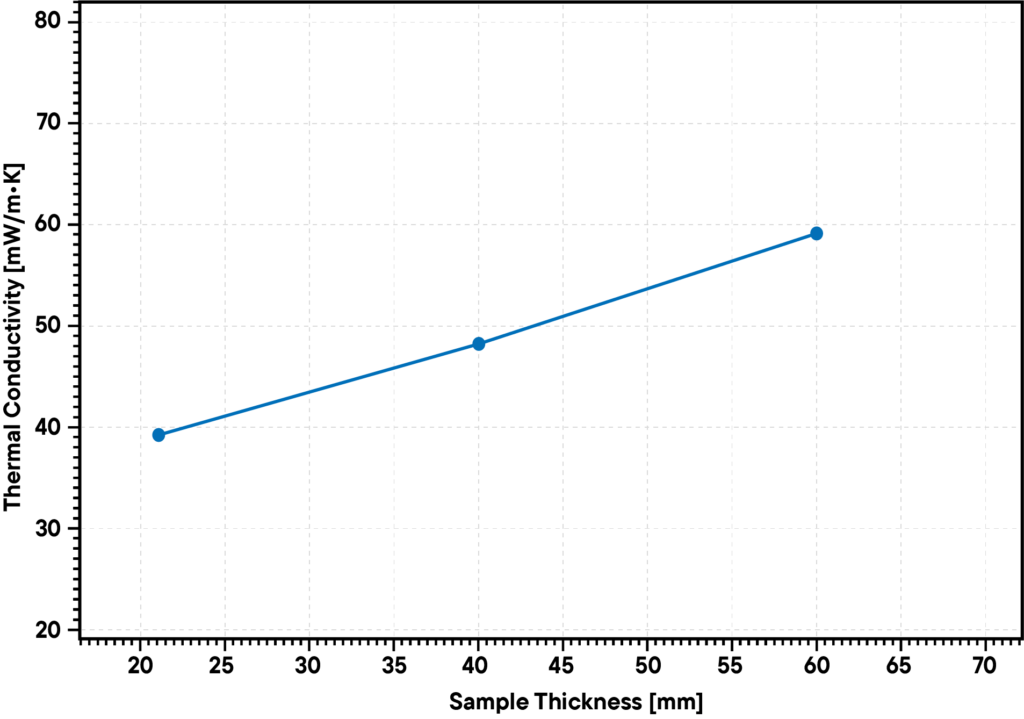
Application example: Polyester fibers
Compressible materials can change their properties depending on the compression.
The thermal conductivity also depends on the compression.
This was demonstrated on a mat made of polyester fibers.
A sample measuring 300 mm x 300 mm and with an initial thickness of around 60 mm was placed in a Linseis HFM L57 300 and tested at room temperature.
Using the distance control, the upper plate was moved so that the sample thickness was gradually reduced to 60 mm, 40 mm and 20 mm.
At each sample thickness, a gradient of 20 K was applied until a stable state was reached.
The compression leads to a significant reduction in thermal conductivity.
External applications
The Application of Building Physics in the Design of Roof Windows (published by: Energies)
Rigid Polyurethane Foams as External Tank Cryogenic Insulation for Space Launchers (published by: IOP Conference Series: Materials Science and Engineering)
THERMAL CONDUCTIVITY OF WOODEN FLOORS IN THE CONTEXT OF UNDERFLOOR HEATING SYSTEM APPLICATIONS (published by: Wood Investigation and Application Department, Wood Technology Institute, Poznan, Poland)
Well informed
